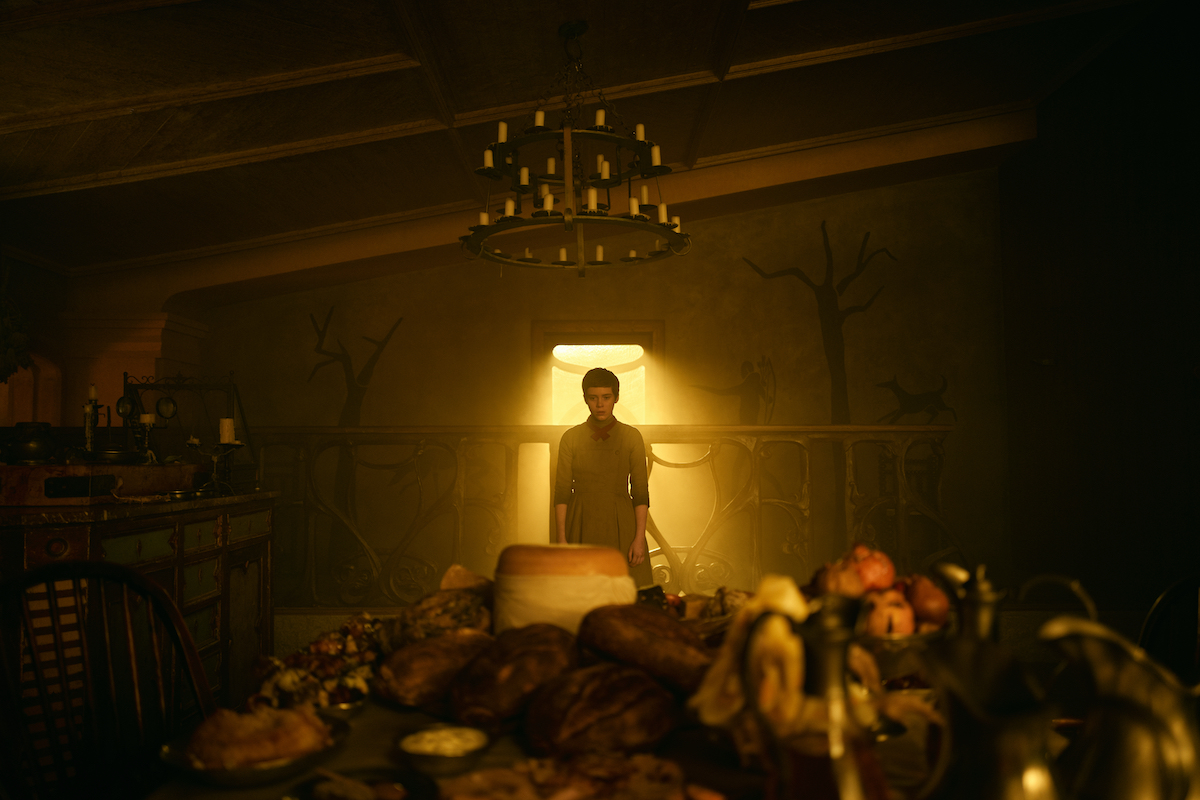
[Interview] Osgood Perkins on Making ‘Gretel & Hansel’ a Horror Movie for a Younger Audience
by Trace ThurmanOsgood Perkins is no stranger to the horror genre. Over the past five years he has delivered the soul-crushing satanist film The Blackcoat’s Daughter (review) and the somber ghost story I Am the Pretty Thing That Lives in the House (review). He now returns to us with Gretel & Hansel (review), an adaptation of the classic fairy tale written by the Brothers Grimm.
Perkins’ films have never relied much on gore to emphasize the horror of his stories, and Gretel & Hansel is no different. Still, the PG-13 rating (or “Pussy 13” rating, as some of our more vocal commenters have dubbed it) for a film about a cannibalistic witch who eats children has given some people pause. This is a story that could easily go the gory route, but Perkins opted to make Gretel & Hansel accessible for children. Snow White: A Tale of Terror this ain’t, but where some PG-13 horror films were originally meant to be R and then cut down to be PG-13 (looking at you, Black Christmas), this was never the case with Gretel & Hansel. When asked why that was, Perkins replied:
“From the very beginning that’s what I wanted to do. Where’s Gremlins today? Where’s the thing for kids that’s just slightly too freaky that just sort of trusts kids to be able to take care of themselves and to be able to emerge out from the other side and there’s just not a lot of those. So yes, the idea was always to honor the younger audience.”
Lest you think this means that Gretel & Hansel won’t also work for older audiences, rest assured that this is not the case. This is yet another instance where a film may not be meant for a certain target audience (hardcore horror fans of a certain age), but that doesn’t mean that they still can’t enjoy it. What Perkins has crafted is a film that works well for more mature viewers, but asks younger ones to rise to the challenge and view it on the same level:
“The trick here is to make sure that the younger audience can hang with it and the gamble is that younger audiences want to be treated with a little bit more intelligence and want to be asked for some patience as opposed to just being given the lowest common denominator thing which, to me, feels like we’re trying to soothe the kids for a minute. I would rather just lift them up with a challenge.”
If you’re familiar with Perkins’ two previous films, you’ll know that he is a fan of leisurely pacing. Unlike those films, he didn’t write Gretel & Hansel (that honor would go to Rob Hayes), but the film still feels like a Perkins film, both from a visual and a narrative perspective. This is a bit puzzling, as you don’t often find many children’s movies that are paced as deliberately as Gretel & Hansel. That is where the film’s brief 87-minute runtime comes into play, but Perkins said he wasn’t worried about boring the audience, telling us:
“Worried? No. Aware? Yeah. We always had an eye on [the pacing] and always had an eye on running time. There’s so many components to succeeding with a movie for kids. There’s a lot that needs to be constantly considered. I feel like we didn’t make the movie overly complicated. We didn’t make the movie overly long. We put some fun into it. I feel like kids are going to say ‘Thanks for giving us a chance to watch something that’s a little bit hard for us.'”
Gretel & Hansel was released in theaters nationwide today.
